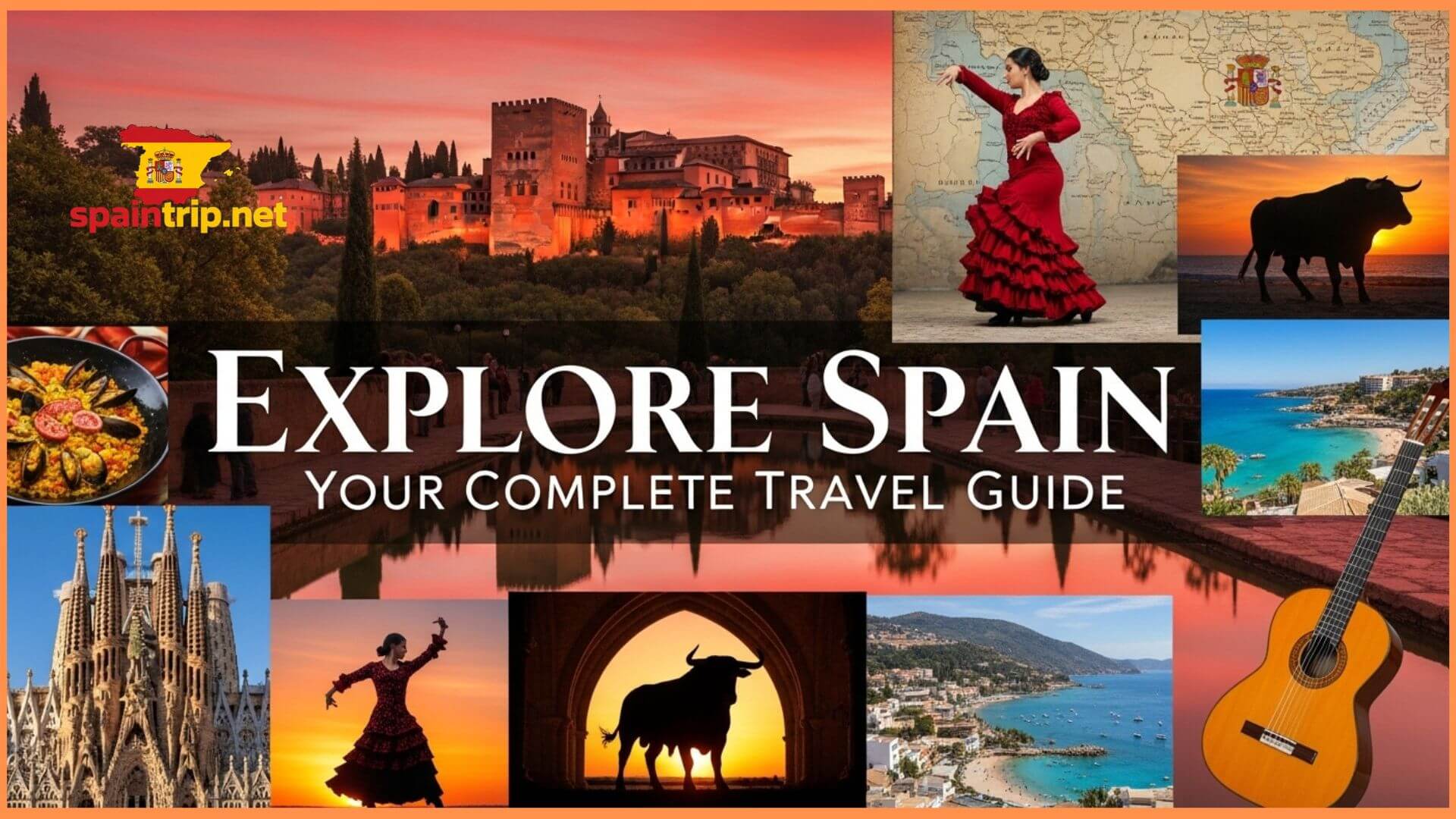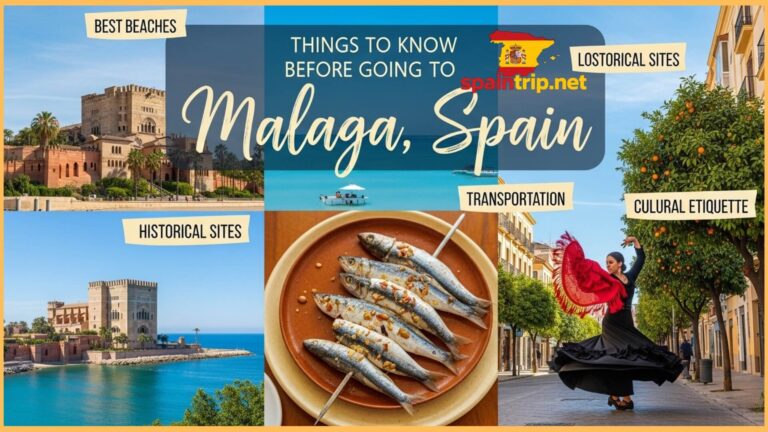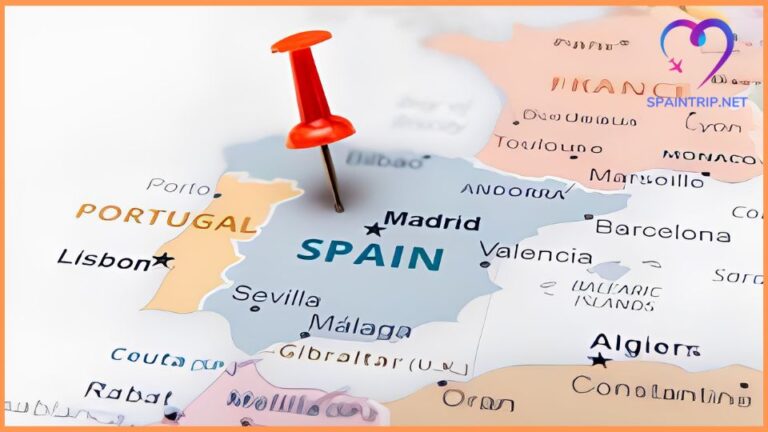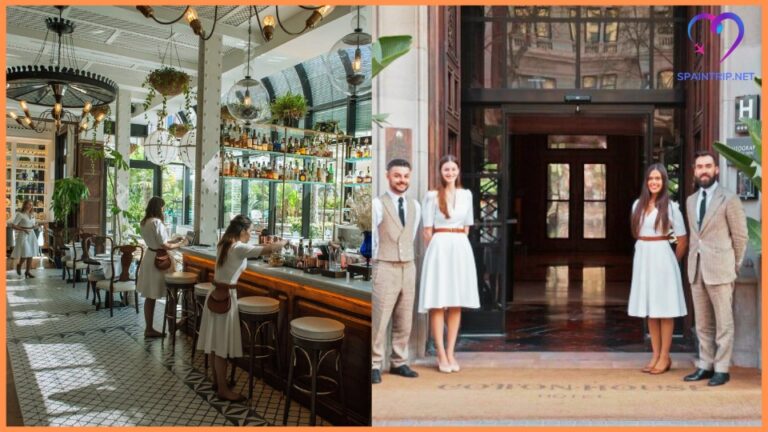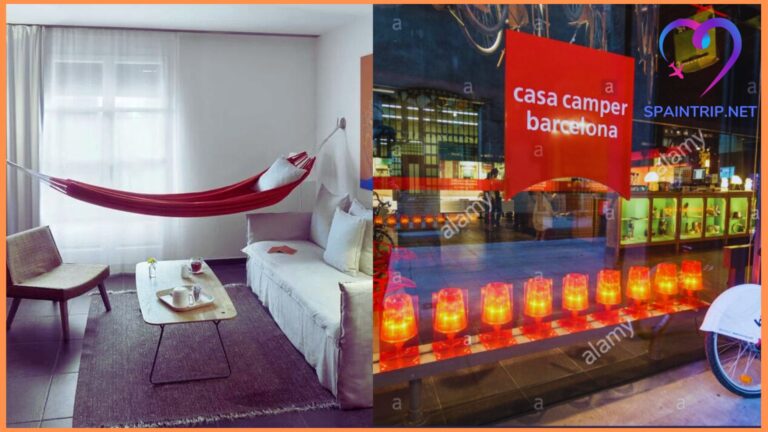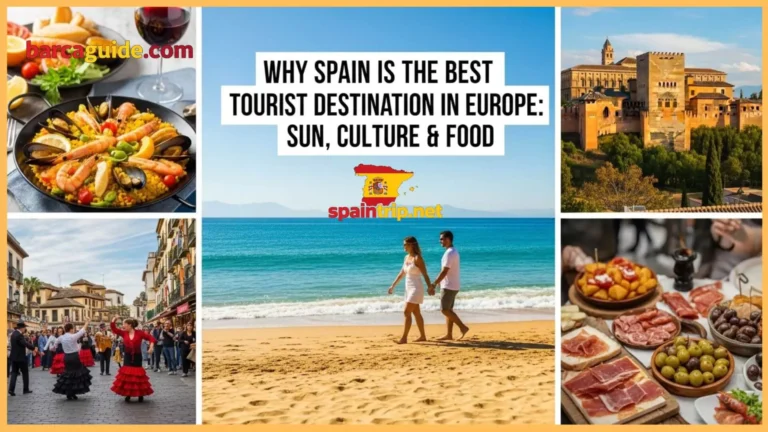Explore Spain: Your Complete Travel Guide
Greetings, future traveler to Spain! You’re considering visiting one of the best countries in Europe? Good decision – no, seriously, you are going to love this place so much more than you could ever imagine and offer everything you want from a vacation (and more).
Spain isn’t just another pretty European destination – it’s like that incredibly talented friend who’s good at literally everything. We’re talking vibrant cities with world-class museums, historic landmarks that’ll give you actual chills, beaches that rival the Caribbean, and food so good you’ll want to move there permanently. Plus, the Spanish have figured out how to actually enjoy life, which honestly, we could all learn from.
Whether you’re dreaming of sipping sangria on Mediterranean beaches in summer, joining wild festivals in spring, or exploring incredible museums and cozy tapas bars during quieter winter months, Spain delivers year-round. Trust me, by the end of this guide, you’ll be booking flights faster than you can say “¡Vamos!”
Why Visit Spain
History That Actually Comes Alive
Spain’s history isn’t just in textbooks – it’s literally everywhere you look. Roman ruins in Mérida, Moorish palaces in Córdoba that look like something from 1,001 Arabian Nights, Gothic cathedrals that took centuries to build. Every corner tells a story, and somehow it all feels incredibly real and accessible, not like you’re walking through a stuffy museum.
Food That’ll Ruin You for Everywhere Else
Spanish cuisine is having a serious moment, and for good reason. We’re talking about way more than just paella (though real paella is incredible). The tapas culture means you can eat your way through an entire evening, hopping from bar to bar and trying different specialties. Plus, the wine regions here produce some seriously amazing bottles that won’t break the bank.
Landscapes That Don’t Seem Real
Spain’s got everything from sun-soaked Mediterranean coastlines to snow-capped Pyrenees mountains to volcanic Canary Islands that look like they belong on Mars. You could literally ski in the morning and hit the beach in the afternoon if you plan it right.
Festivals That Are Absolutely Wild
Spanish festivals aren’t just parties – they’re full-blown cultural experiences that’ll change how you think about celebration. Whether it’s throwing tomatoes at strangers in Buñol or watching the running of the bulls in Pamplona, these events are bucket-list worthy.
Top Destinations
Madrid – The Heart of Spain
Madrid is like that friend who knows how to party but also has incredible taste in art. The Prado Museum houses some of the world’s best paintings, the Royal Palace is absolutely stunning, and the nightlife here is legendary (dinner doesn’t even start until 10 PM!).
The energy in Madrid is infectious. People actually hang out in public squares, families have picnics in Retiro Park, and there’s this incredible mix of traditional and modern that makes every neighborhood feel different.
Barcelona – Where Art Meets Beach Life
Barcelona is pure magic. Gaudí’s architecture looks like it came from a fever dream (in the best way), La Rambla buzzes with energy day and night, and you can literally walk from incredible museums to beautiful beaches in about 20 minutes.
The food scene here is incredible, the nightlife rivals any major European city, and somehow the whole city feels like one big outdoor art installation.
Seville – Romance and Passion
If Spain had a soundtrack, it would be flamenco, and Seville is where that music lives. The Alcázar is one of the most beautiful palaces you’ll ever see, the old town is perfect for getting lost in, and the atmosphere here is incredibly romantic and passionate.
Plus, Seville knows how to party – the spring fair here is absolutely incredible, and the tapas scene is world-class.
Valencia – Modern Spain at Its Best
Valencia perfectly balances futuristic architecture (the City of Arts and Sciences looks like a space station) with traditional Spanish culture. This is where paella actually comes from, so you know the food’s going to be incredible, and the beaches here are way less touristy than Barcelona’s.
Granada – Moorish Majesty
The Alhambra alone is worth the trip to Granada. This Moorish palace complex is one of the most incredible buildings in the world, and the Albaicín quarter with its narrow streets and stunning views is pure enchantment.
The Islands – Paradise in Europe
Mallorca has gorgeous coves and traditional villages, Ibiza has world-famous nightlife and surprisingly beautiful beaches, and Tenerife has year-round perfect weather and landscapes that look otherworldly.
Hidden Gems You Need to Know About
San Sebastián has some of the best food in the world (seriously, more Michelin stars per capita than almost anywhere). Ronda sits dramatically on cliffs that’ll make your Instagram followers jealous. Salamanca glows golden at sunset thanks to its sandstone architecture.
Best Things to Do (Beyond the Obvious)
Food Adventures
Tapas tours aren’t just eating – they’re social experiences that’ll teach you how Spanish people actually live. Wine tastings in Rioja or Ribera del Duero are incredible, and cooking classes will teach you to make proper paella (hint: it’s not supposed to have chorizo).
Cultural Experiences
Flamenco shows in intimate venues are absolutely mesmerizing. UNESCO World Heritage Sites like Toledo and Santiago de Compostela are living history lessons.
Outdoor Adventures
Hiking in the Pyrenees offers some of Europe’s most beautiful mountain scenery. Surfing in the Basque Country is world-class, and yes, you can actually ski in Sierra Nevada while being a few hours from tropical beaches.
Practical Travel Tips (The Stuff You Actually Need)
Getting Around
Spain’s high-speed trains (AVE) are fantastic – Madrid to Barcelona in 2.5 hours, Madrid to Seville in the same time. Domestic flights are cheap for longer distances, and rental cars are great for exploring rural areas and smaller towns.
Language Tips
Spanish is obviously helpful, but don’t worry if you don’t speak it – most tourist areas have English speakers. However, learning basics like “por favor” (please) and “gracias” (thank you) goes a long way.
Fun fact: Catalan in Barcelona, Basque in the north, and Galician in the northwest are all official regional languages. Don’t panic – everyone speaks Spanish too.
Money Matters
Spain uses the Euro, and here’s the beautiful thing – your money goes way further than in most Western European countries. Budget travelers can do €50-70/day, mid-range €100-150/day, luxury €200+/day.
Cultural Notes
Pickpockets are common in tourist areas, so keep your stuff secure. Dining times are late (lunch at 2-4 PM, dinner at 9-11 PM). Siesta is real – many shops close 2-5 PM, so plan accordingly.
When to Visit
Spring & Fall (The Sweet Spots)
April-June and September-November have perfect weather, fewer crowds, and reasonable prices. Spring gets you amazing festivals, fall gives you harvest season in wine regions.
Summer (Beach Time!)
June-August is peak season – hot weather, crowded beaches, higher prices, but also the best beach weather and incredible festivals.
Winter (Hidden Gem Season)
December-March means cheaper prices, fewer tourists, and still pretty mild weather. Perfect for museums, cities, and cultural experiences. Plus, you can actually ski in the Pyrenees and Sierra Nevada!
Suggested Itineraries
One Week Classic
Madrid (2 days) → Seville (2 days) → Granada (2 days) → Barcelona (1 day for flights home)
This gives you royal Madrid, passionate Andalusian culture, the incredible Alhambra, and a taste of Catalonia.
Two Weeks Grand Tour
Barcelona (3 days) → Valencia (2 days) → Madrid (3 days) → Seville (2 days) → Granada (2 days) → Córdoba (1 day) → Toledo (1 day)
Beach Escape
Pick either Balearic Islands (Mallorca, Ibiza, Menorca) or Canary Islands (Tenerife, Gran Canaria) and island-hop for a week of pure paradise.
Food & Drink Highlights
Must-Try Dishes
Paella (but get it in Valencia for the real deal), jamón ibérico (the world’s best ham), tortilla española (Spanish potato omelet that’s way better than it sounds), gazpacho (cold soup that’s perfect in summer heat).
Regional Specialties
Pintxos in Basque Country are like elevated tapas, gazpacho in Andalusia is refreshing perfection, cochinillo in Segovia (roast suckling pig) is incredible if you eat meat.
Wine & Drinks
Rioja and Ribera del Duero produce world-class red wines, Albariño from Galicia is perfect with seafood, and sangria is touristy but actually pretty great when made properly.
Accommodation Options
Luxury Options
Boutique hotels in converted palaces, luxury beach resorts on the islands, Paradores (state-run hotels in historic buildings like castles and monasteries) for a unique Spanish experience.
Budget-Friendly
Hostels in major cities are social and affordable, vacation rentals are great for families or longer stays, small family-run hotels offer authentic experiences at reasonable prices.
Final Travel Checklist
Documents
Valid passport (no visa needed for most countries for stays under 90 days), travel insurance (always a good idea), copies of important documents stored separately.
Packing Tips
Comfortable walking shoes (those cobblestone streets are rough on feet), layers for temperature changes, sun protection (Spanish sun is intense), modest clothing for churches and religious sites.
Frequently Asked Questions
Is Spain safe for solo travelers? Absolutely! Spain is one of the safest countries in Europe. Just use common sense in tourist areas and watch for pickpockets in crowds.
How much should I budget for Spain? Spain offers great value. Budget €50-70/day for backpacking, €100-150/day for comfortable travel, €200+/day for luxury. Food and accommodation are generally cheaper than northern Europe.
What’s the best way to get around Spain? High-speed trains for major cities, budget flights for longer distances, rental cars for exploring rural areas. Public transport in cities is excellent and affordable.
Do I need to speak Spanish? It helps, but you can get by with English in tourist areas. Learning basic phrases shows respect and locals really appreciate the effort.
What’s the best time to visit? Spring (April-June) and fall (September-November) offer the best weather and fewer crowds. Summer is great for beaches but hot and crowded. Winter is mild and perfect for cultural sightseeing.
Is Spanish food suitable for dietary restrictions? Spain has become much more accommodating. Vegetarian options are increasingly common, and major cities have gluten-free and vegan restaurants. However, traditional Spanish cuisine is heavy on meat and seafood.
Your Spanish Adventure Awaits
Listen, I could write a novel about why Spain is absolutely incredible, but honestly, the best way to understand its magic is to experience it yourself. This country has this amazing ability to exceed every expectation – the food is better than you imagine, the architecture is more stunning than photos suggest, and the warmth of Spanish culture will leave you planning your return trip before you’ve even left.
Spain isn’t just a vacation – it’s an experience that changes how you think about travel, food, culture, and what it means to really enjoy life. Whether you’re exploring world-class museums in Madrid, getting lost in Barcelona’s artistic neighborhoods, dancing flamenco in Seville, or lounging on perfect beaches in the islands, every moment feels special.
The Spanish have mastered the art of living well – long meals with friends, afternoon siestas, evening strolls, late-night conversations over wine. It’s infectious, and you’ll find yourself slowing down and savoring experiences in ways you never did before.
Ready to fall in love with Spain? Start planning your Spanish adventure today – those tapas tours, museum visits, and beach sunsets are calling your name!

